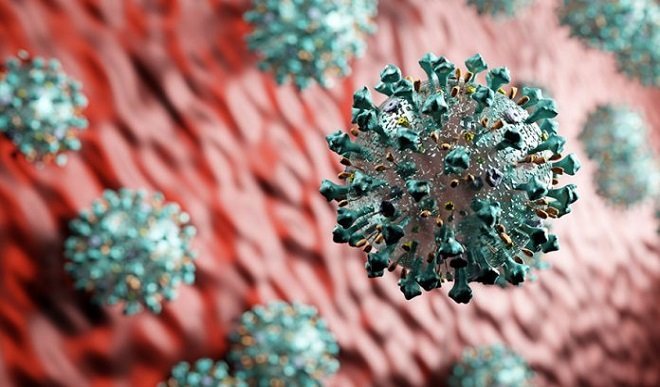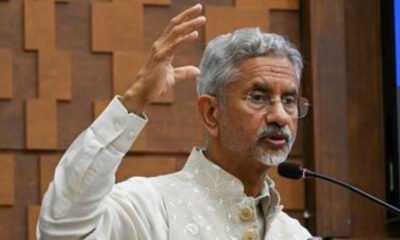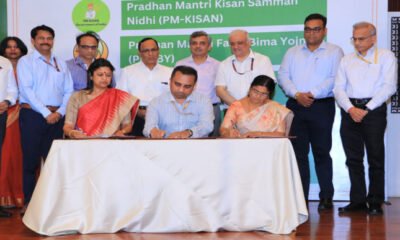National
MONETARY MEASURES: 17 APRIL, 2020
Nisha Sharma.
The constantly evolving Covid-19 pandemic has cast a long shadow on the global economy. The state of the already slowing Indian economy was exacerbated by the pandemic. With limited space for a fiscal stimulus, the onus for economic revival now rests with the monetary policy of the country. On April 14, the IMF released its global growth projections, revealing that in 2020, the global economy is expected to plunge into the worst recession since the Great Depression, far worse than the Global Financial Crisis- estimating the cumulative loss to global GDP over 2020 and 2021 at around 9 trillion US dollars. India is among the handful of countries that is projected to cling on tenuously to positive growth (at 1.9%). Surplus liquidity in the banking system has increased sharply after RBI’s liquidity injection of about 3.2 per cent of GDP since February 2020.
The contraction in exports in March 2020 at (-) 34.6% turned out to be much more severe than during the global financial crisis. However, foreign exchange reserves continue to be robust at US $ 476.5 billion on April 10, 2020 equivalent to 11.8 months of imports.
After 27 March 2020, the RBI announced the second set of measures on 17 April 2020. Against the backdrop of a four pronged strategy to maintain adequate liquidity in the system, facilitate and incentivize bank credit flows, ease financial stress and enable the normal functioning of markets, following measures were proposed-
Since, the lockdown has more severely impacted small and mid-sized corporations, including non-banking financial companies (NBFCs) and micro finance institutions (MFIs), it has been decided to inject Rs 50,000 crore of additional liquidity into the banking system through targeted long-term repo operations (TLTRO 2.0), with at least 50% of it going to small and mid-sized NBFCs and MFIs.
To make the liquidity seep to the grass root level, a special refinance facility of Rs 15,000 crore to SIDBI, Rs 25,000 crore to NABARD, and Rs 10,000 crore to HFCs has been announced as they play an important role in meeting the long-term funding requirements of rural sector and small scale industries.
This is how Bank Mergers will impact the Indian economy
In order to encourage banks to deploy the surplus funds of ₹6.9 lakh crore absorbed under reverse repo operations, in productive sectors of the economy, a cut of 25 basis points in the reverse repo rate (the rate at which the central bank borrows money from the commercial banks) has been announced as it was brought down to 3.75% from 4% earlier. Repo rate (the rate at which the central bank lends money to the commercial banks) however, stands unchanged at 4%.
Thus, lending to the RBI has been made less attractive. As a result, individuals may see banks reducing their margins on interest rates charged on loans, thus lending more to the consumers and businesses. Together with the measures announced on March 27, the RBI’s liquidity injection was about 3.2 per cent of GDP since the February 2020 MPC meeting. Excess liquidity in the economy is expected to exert downward pressure on the interest rates, thus, further reducing interest rates offered on fixed deposits.
However, the impact of these announcements will not be immediate and may be marginal.
Addressing the issue of non repayment of bank dues because of the current lockdown, the RBI, on March 27, 2020, had allowed putting on hold EMI payments for three months. Now, the moratorium period will even be excluded from the 90-day NPA norm (the 90 day NPA norm classifies a loan as a non performing asset post 90 days of overdue in making payments).
Sensing a risk build up in banks’ balance sheets because of delays in recoveries, banks are to maintain a higher provision of 10% on all such accounts, spread over two quarters, i.e., March, 2020 and June, 2020.
To retain their capacity to support the economy and absorb losses in this environment of heightened uncertainty no dividends are to be paid from bank profits of the financial year ended March 31, 2020 until further instructions.
To further enhance liquidity, the Liquidity Coverage Ratio requirement for Scheduled Commercial Banks is being brought down from 100% to 80% and is to be gradually restored back in two phases – 90% by October 1, 2020 and 100% by April 1, 2021.
The financial stocks made solid gains post the announcement of these measures. While, the Sensex surged 986 points (3.22%) with Axis Bank (up nearly 13.5%) being the top gainer, the Nifty gained 274 points (3.05%).
Yet, how effectively these measures are transmitted to the economy remains to be a question considering the already distressed state of Indian banking sector.























